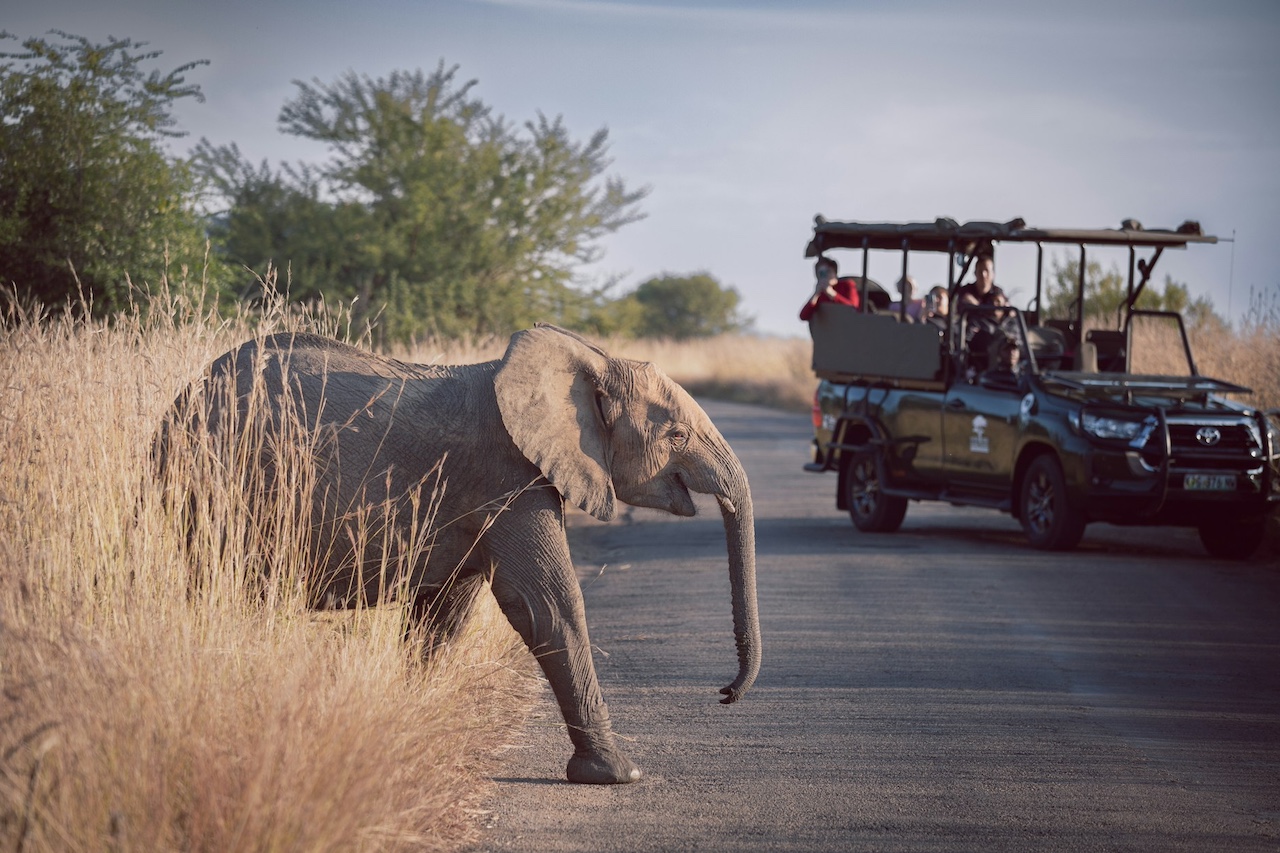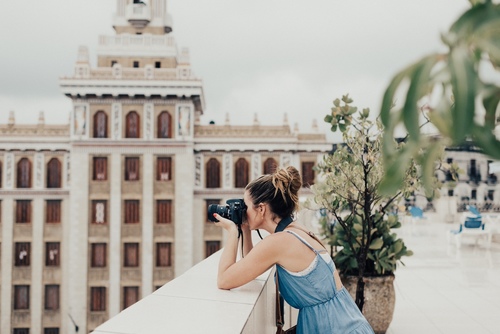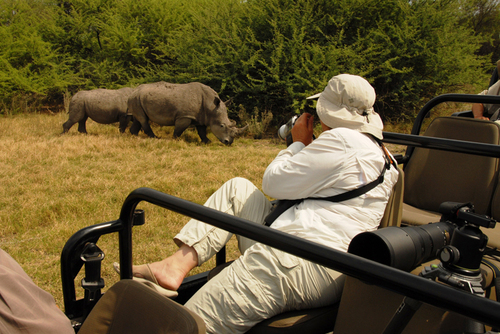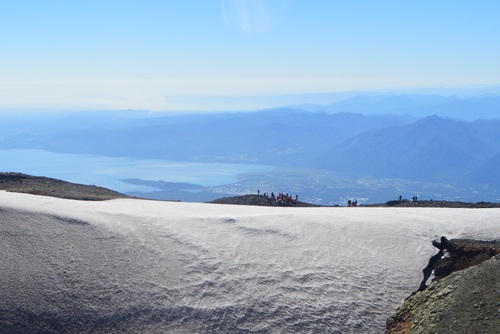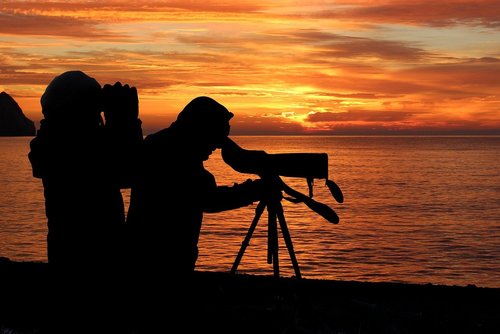This type of travel photography does take time and practice, and it’s very different to shooting landmarks or other local attractions. It also requires more specialized equipment, amongst which is a telephoto lens and tripod.
If you’re keen to learn more about using telephoto lenses and tripods to enhance your skills and capture breathtaking shots, check out our wildlife photography guide below.
Choosing the Right Telephoto Lens
Choosing the right telephoto lens for wildlife photography is a critical decision that significantly impacts the quality and versatility of your shots. Several key factors should guide your selection process.
Lens length: First and foremost, consider the lens's focal length. Wildlife photography often demands long focal lengths to capture subjects from a distance without causing disturbance. Telephoto lenses with focal lengths ranging from 300mm to 600mm or more are the most popular choices for this type of photography. The specific focal length you choose depends on the types of wildlife you plan to photograph and the shooting conditions you anticipate.
Aperture: The aperture of the telephoto lens is another crucial consideration. A wide aperture, such as f/2.8 or f/4, is beneficial, especially in low-light situations. A larger aperture allows more light to reach the camera sensor, making for faster shutter speeds and improved isolation of the subject of your photo. This is particularly advantageous when photographing fast-moving animals or in environments with challenging lighting conditions.
Stabilization: Image stabilization technology is a feature that shouldn't be overlooked, especially when working with longer focal lengths. It helps counteract the effects of camera shake, ensuring sharper images when shooting handheld or at slower shutter speeds. This feature becomes particularly important during wildlife photography, where capturing fleeting moments often requires quick and spontaneous movements.
Dimensions: You should also consider the weight and size of the lens as you may find yourself navigating diverse terrains and environments when you’re photographing wildlife. While longer focal lengths provide more reach, they can also contribute to the overall weight of the lens. Strike a balance between reach and portability, ensuring that the lens is manageable for extended periods of use without causing excessive fatigue.
Use a Gimbal Head for Stability
When working with telephoto lenses, stability is paramount. A gimbal head for your tripod provides fluid movement and precise control, allowing you to smoothly track and follow your subjects. Unlike traditional tripod heads, gimbals distribute the weight evenly, reducing strain on the photographer and ensuring smoother panning.
Invest in a Sturdy Tripod
Investing in a sturdy tripod is foundational for achieving sharp and well-composed images. The choice of a tripod significantly influences the stability of your camera setup, particularly when using telephoto lenses with extended focal lengths.
Here are several reasons why a sturdy tripod is essential for wildlife photography:
- Camera Stability
Wildlife photographers often find themselves in environments where uneven terrain or challenging conditions make handheld shooting impractical. A sturdy tripod provides a stable platform, minimizing the impact of shaky hands or external factors that could introduce unwanted vibrations.
- Longer Focal Lengths
When working with telephoto lenses, the magnification effect is heightened, making any camera movement more pronounced. A sturdy tripod counteracts this, allowing you to use longer focal lengths confidently and capture distant subjects with precision.
- Low Light Conditions
In wildlife photography, early mornings, late evenings, and overcast days are common scenarios. A sturdy tripod enables you to use slower shutter speeds without introducing motion blur, making it crucial for capturing detailed images in low light.
- Consistent Composition
A tripod helps maintain a consistent composition, allowing you to frame and compose your shots with precision. This is especially important when waiting for the perfect moment, as patience is key to capturing natural animal behaviors.
- Reduced Fatigue
Wildlife photography often involves long hours of waiting and observing. Holding a heavy camera setup for extended periods can lead to fatigue, affecting your ability to concentrate and capture decisive moments. A sturdy tripod alleviates this strain, providing a comfortable and stable support system.
When selecting a tripod, consider factors such as maximum load capacity, height, leg stability, and material.
Carbon fiber tripods are popular for their combination of strength and lightness, making them suitable for photographers who need to traverse various terrains. Ultimately, a sturdy tripod is an invaluable investment that enhances the technical aspects of your wildlife photography, ensuring your equipment performs optimally in diverse and challenging conditions.
Set Up Quickly with a Quick-Release Plate
Wildlife is often unpredictable, and crucial moments can pass in the blink of an eye. A quick-release plate on your tripod enables you to mount and dismount your camera swiftly. This feature is invaluable when transitioning from handheld to tripod shooting or rapidly changing your composition. It minimizes the chances of missing a fleeting wildlife encounter.
Be Mindful of Your Background
The interplay between telephoto lenses and backgrounds is crucial in crafting visually compelling wildlife shots. With their longer focal lengths, telephoto lenses allow you to isolate your subjects from their surroundings, emphasizing the details of the wildlife while creating a beautiful bokeh effect in the background.
Selecting the right background is imperative for enhancing the overall aesthetic of wildlife photographs. A wide aperture facilitates a shallow depth of field, effectively blurring the background. This separation between the subject and its surroundings draws attention to the focal point, resulting in a more impactful and aesthetically pleasing image.
You should also be mindful of the background's colors, textures, and overall composition. A well-chosen background can complement the subject, providing context without distracting from the main focus. Consider elements like foliage, water, or open landscapes, and aim for backgrounds that enhance the narrative of the wildlife scene.
In essence, the synergy between telephoto lenses and background selection will allow you to capture the intricate details of your subjects and create visually stunning and emotionally resonant compositions. These impressive shots are perfect for building your portfolio while showcasing the beauty of the natural world.
The Best Way to Shoot Wildlife
Mastering wildlife photography with telephoto lenses and tripods requires a combination of technical knowledge, equipment selection, and practical skills. Choosing the right lens and investing in a sturdy tripod can ensure you get the best shots on every wildlife holiday.
Remember to be patient, stay observant, and immerse yourself in the natural environment to capture the beauty of wildlife in its most authentic form.

